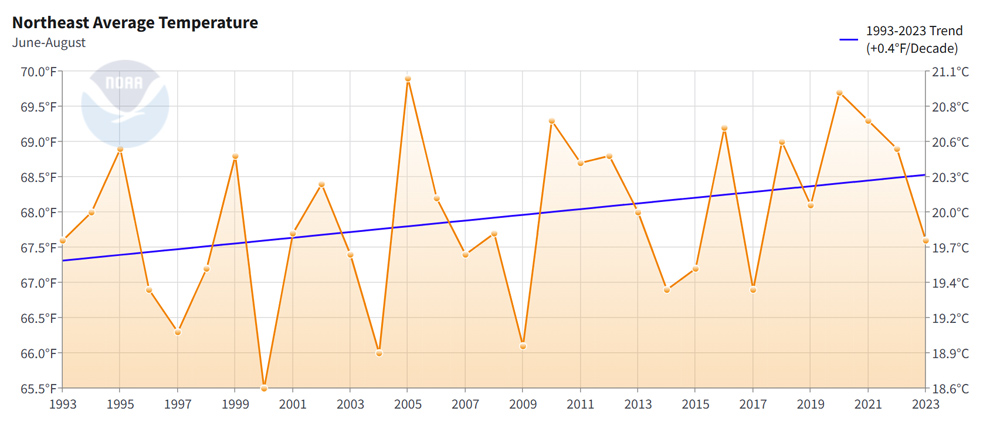ISO-NE expects to have adequate resources to meet its projected 24,553-MW peak load this summer, the RTO announced as part of its summer outlook, released June 3.
The ultimate outcome will be highly dependent on weather, ISO-NE said, estimating there is a 10% chance the peak load exceeds 26,383 MW. The RTO anticipates having about 30,000 MW of capacity available.
“While the ISO expects the region to have adequate supplies of electricity this summer, abnormal conditions could force system operators to take action to maintain system reliability,” ISO-NE wrote in a press release. “Climate change has caused weather to become more volatile and less predictable, increasing the potential for system operators to resort to these actions.”
Weather is the region’s “largest driver of energy use,” ISO-NE noted, adding that hot and humid conditions coupled with unexpected generator outages would be especially difficult to manage.
ISO-NE’s demand forecasts are based on weather data from the prior 30 years, but they do not consider climate forecasts or more granular climate trends.
Data from the National Oceanic and Atmospheric Administration indicate average and maximum summer temperatures have been trending up in the Northeast over the past 30 years. Average temperatures for summer months have increased by about 0.4 degrees per decade since 1993, while maximum temperatures have increased by about 0.3 degrees per decade.
“Just a 1-degree change in temperature can impact the load and demand in New England significantly — by half a gigawatt or more,” Mike Fontaine, supervisor of operations forecasting for ISO-NE, said in a video released in May.
ISO-NE has indicated it plans to incorporate climate modeling into demand projections starting in 2025. (See ISO-NE Decreases Its 10-year Peak Load Forecast.)
The RTO also highlighted the role behind-the-meter (BTM) solar has played in reducing peak demand, noting that it is responsible for approximately a 1,000-MW reduction in the summer peak. The roughly 7,000 MW of BTM solar capacity in the region has pushed the timing of the peak from midafternoon to early evening, ISO-NE added.
The forecast also includes just over 2,000 MW of energy efficiency, ISO-NE said, while dispatchable active demand response is counted as a supply-side capacity resource.
This summer will be the first following the retirement of the Mystic Generating Station, which was once New England’s largest fossil power plant. ISO-NE said it is “not projecting any capacity issues during the summer based on this retirement.”
The 24,553-MW peak projection would be an increase over the 2023 peak load of 24,043 MW, which occurred Sept. 7.




